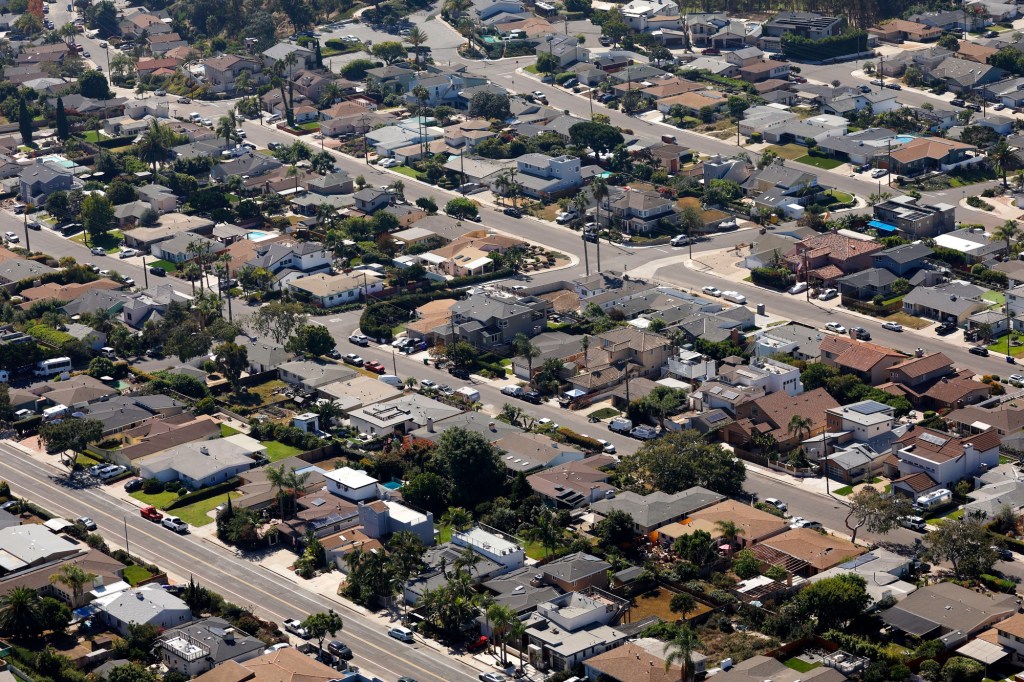
San Diego is launching a new effort to encourage construction of townhomes and row homes that blend better into existing neighborhoods than high-rise housing.
City officials say the program also aims to help solve the local housing crisis by creating more homeownership opportunities for first-time buyers, middle-income people and families with children.
The effort could soften backlash against new housing development by making many new projects less visually distinct and more consistent with existing neighborhood character.
Supporters say the effort — which would be restricted to areas the city considers high-resource, with good jobs and educational opportunities — could help create income-diverse neighborhoods by adding lower-income housing.
But a group representing single-family homeowners worries the initiative could be an attempt to quietly revive city plans to implement a controversial state housing law known as SB 10.
Public backlash prompted Mayor Todd Gloria last year to abandon his plan to make San Diego the first California city to embrace SB 10, which allows 10 units on some properties now zoned for single-family homes.
A city spokesperson said this week that the new townhome effort, which has been dubbed the Small-Scale Neighborhood Homes Initiative, is not a revival of the city’s effort to enact the policy.
But the group representing single-family homeowners — Neighbors for a Better San Diego — said there are many reasons to believe that it is, including environmental hurdles the townhome initiative would face unless the city invokes SB 10.
City officials applied last week for a $7 million federal grant that would help pay for the townhome initiative, which city planners began preliminary work on last year.
Using a $500,000 grant from the county’s regional planning agency, the San Diego Association of Governments, planners have created financing strategies, architectural guidelines and sample plans, layouts and designs for the townhomes and row homes.
The federal money would pay for two studies, a public engagement campaign and, eventually, the creation of proposed development regulations the City Council would need to approve.
The first study would analyze opportunities to promote homeownership and provide alternative approaches and structures, such as co-ops, land trusts and publicly owned housing.
The second study would explore financing mechanisms the city could use or promote to support the building of townhomes, row homes and other structures the city calls “small-scale multiple-home buildings.”
This is where the city would figure out how to incentivize developers of the townhomes to make some of the units affordable to low-income and middle-income people.
The public engagement campaign would include workshops to solicit input. Neighbors for a Better San Diego has lobbied to be included in this process as a key stakeholder.
The regulations would allow for the development of small-scale neighborhood housing through new or amended zones within Sustainable Development Areas — high-resource areas that make up 60 percent of the city.
The new homes would be required to be at the same scale or a similar scale to the existing housing in the neighborhood.
To leaders of Neighbors for a Better San Diego, the townhome initiative appears to be an improved version of what city planners proposed last year on SB 10, a state program cities can choose to embrace or reject.
“A key reason for pushback against San Diego’s proposed SB 10 implementation was that it was inconsistent with neighborhood housing forms and design patterns,” said Geoff Hueter, a group leader. “Well-planned ‘gentle density’ that matches neighborhood scale and design standards would go a long way toward rebuilding public trust in city planning.”
Hueter also praised the city’s plan to prioritize objective design standards and form-based codes for infill housing.
But Hueter said his group would still object to a revival of SB 10 and has some major concerns about the townhome initiative. In particular, he’s worried that the pictures the city shows as examples of the new townhomes don’t include all of the housing types that the new zoning would allow.
City spokesperson Tara Lewis said this week that the new initiative is not a revival of SB 10.
Hueter said SB 10 allows cities smooth environmental approval that the city would likely use to accelerate approval of the townhome initiative.

















































